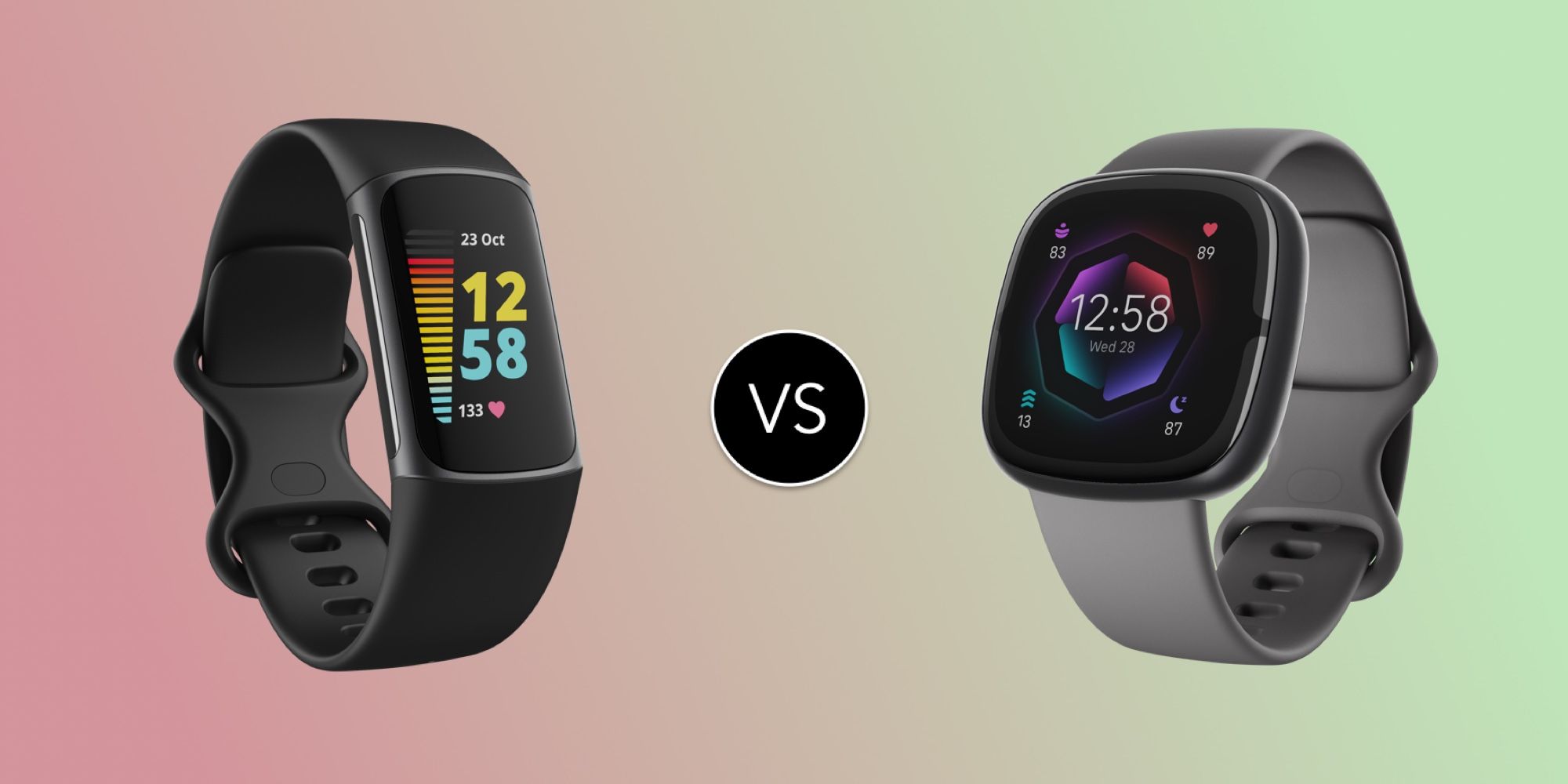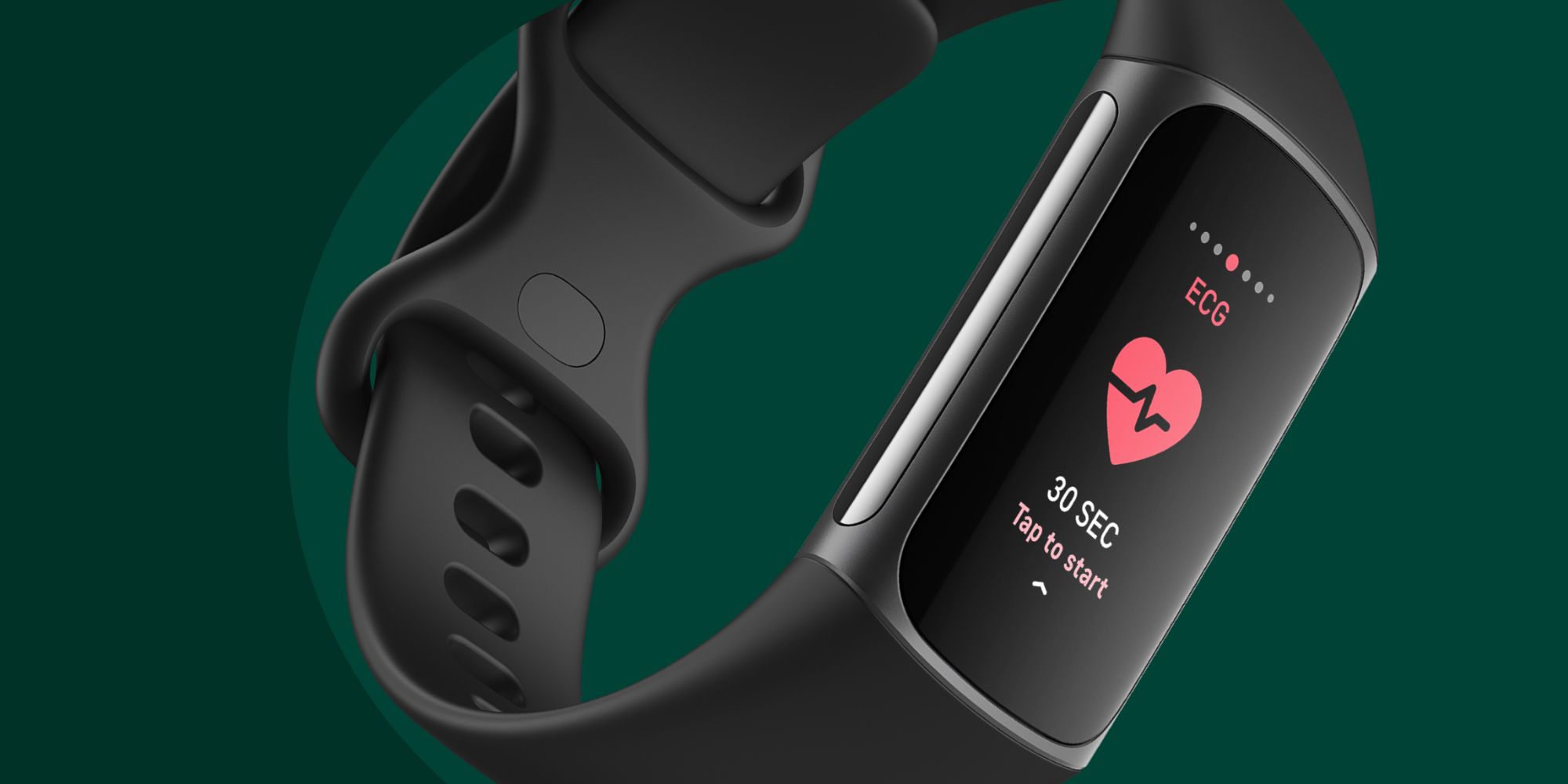Fitbit's Charge 5 is a fitness tracker that includes ECG capability, just like the much more expensive Fitbit Sense 2 smartwatch. For anyone in the market for a wearable that includes this feature, it might be possible to walk away with considerable savings if the extra features of the full-size watch are not needed. An exploration of how they differ and where the two overlap should prove to be helpful for shoppers who want the best value ECG to suit their needs.
The Fitbit Charge 5 is surprisingly full-featured, incorporating many of the capabilities of more expensive devices. The same ECG and EDA features that set the Sense 2 apart from the company's other watches and trackers are included in the Charge 5. Both devices include a bright and colorful display with an option for the screen to be set to always-on mode. The Fitbit Sense 2 has a very long battery life for a smartwatch, rated at six days. However, the Charge 5 wins in this area, lasting a full day longer. The one-inch screen of the Fitbit Charge 5 accounts for this difference in maximum run time since its smaller display should require less energy than the 1.6-inch square display of the Sense 2.
Fitbit Charge 5 Vs. Sense 2: Price & Value
The Fitbit Sense 2 is a powerful and versatile smartwatch, able to be customized with new clock faces and apps to freshen the look and provide new capabilities. It allows easy access to Amazon Alexa for quick questions, setting reminders, and controlling smart home accessories. Unfortunately, Google Assistant support is missing, but users can get turn-by-turn directions on their wrist thanks to Google Maps integration. It can also answer incoming calls, allowing hands-free communication using Bluetooth to connect to a paired phone.
The Sense 2 also offers fast charging, with 12 minutes of charging providing up to a day of battery life. In terms of activity tracking, the Sense 2 can also track floors climbed through the day. It has a dedicated temperature sensor to track changes in skin temperature at night, unlike the Charge 5 that relies on existing sensors to measure this variance. The Sense 2 also incorporates a cEDA sensor for all-day stress tracking and offers guided breathing sessions too.
The Fitbit Charge 5 is clearly the winner if the price weighs heavily in the decision beyond its ECG capability. At $149, it shaves a hefty $150 off the price of the Fitbit Sense 2 which retails for $299. Sale pricing is sometimes available on the Charge 5, making the price difference even bigger. Health and fitness tracking are virtually identical between the two models, leaving the smartwatch features as one of the few areas that set them apart. That means the Fitbit Sense 2 might be worth the extra money for those looking for the extra customization and advanced capabilities that only a smartwatch can provide.
The ECG sensor found in Fitbit’s devices works with the accompanying Fitbit ECG app. It helps monitor for heart irregularities like atrial fibrillation, which is when the heart’s upper and lower chambers aren’t working in proper sync. With the Fitbit ECG, wearers can take a 30-second reading of their heart rhythm. This information is recorded in the app, so users can see their readings over time and present the results to their doctor if they suspect something isn’t right. It’s a feature that’s become increasingly common in wearables, with Apple now offering ECG in its Apple Watch lineup too. If the focus is primarily on health and fitness monitoring, the Fitbit Charge 5 offers great value for a unique, ECG-capable tracker.


